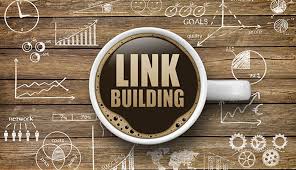Link building doesn’t have to be hectic. It can be simplified to ticking items off a bucket list and ranking high. That is what this guide is all about.
SEO (Search Engine Optimization) and link building are multifaceted — from on-page, technical, to off-page tactics. All those various steps can be challenging for a beginner.
If only there was a checklist to build links…🤔
Well, there is: it is this guide.
Here’s a sneak peek of what to expect:
- I simplified link building into a 20-point checklist using tips from my experience of building links since 2009.
- For easier comprehension, I sorted the action points into 5 broader categories.
Let’s go.
Do Some Groundwork Before Your Link Building Campaign
Proper link building is rigorous. Its results can take up to 6 months. That timeline might be discouraging to a beginner like you — especially if your backlink profile looks like this:
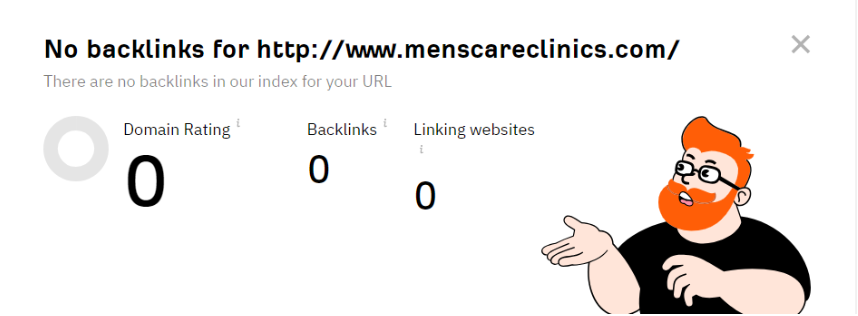
Fortunately, you can do some groundwork and bump the profile before the “real” work starts. Adopt the points below.
List Your Site on Directories
Directory link building is not only fundamental for all businesses. It is also easy and often FREE. Plus, it is easy.
Besides the link building benefits, listing your site/business on directories helps with local visibility and sales.
Note:
Don’t list your site in random directories. Find the ones in your niche and related niches. Most importantly, ensure they are locally relevant and hosted on relevant websites.
📌 Here’s how to find high-quality directories in your local and niche:
- Type this “directories for electrician in myrtle beach” into Google search
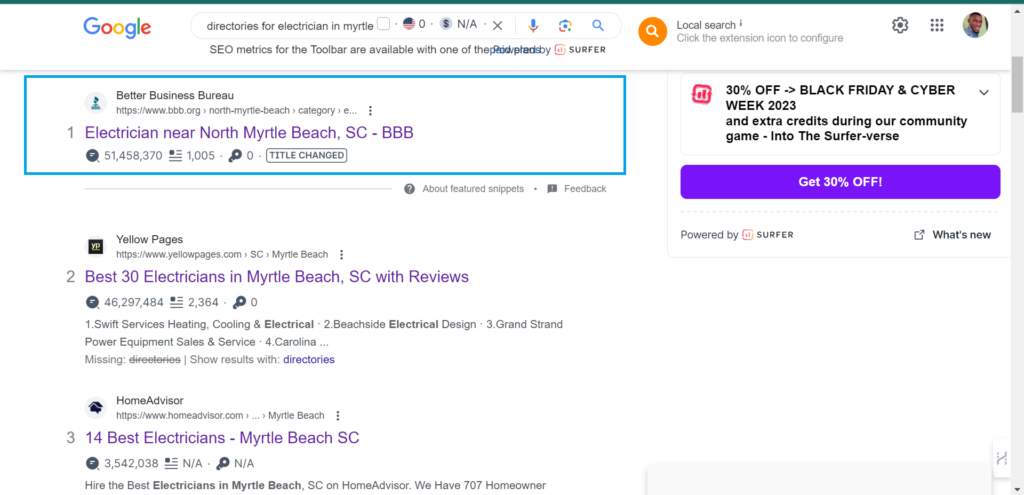
- I’ll select the result without the “best” tags — we’ll treat those later.
- Visit the directory of choice > find the “list your business” button and follow the instructions.
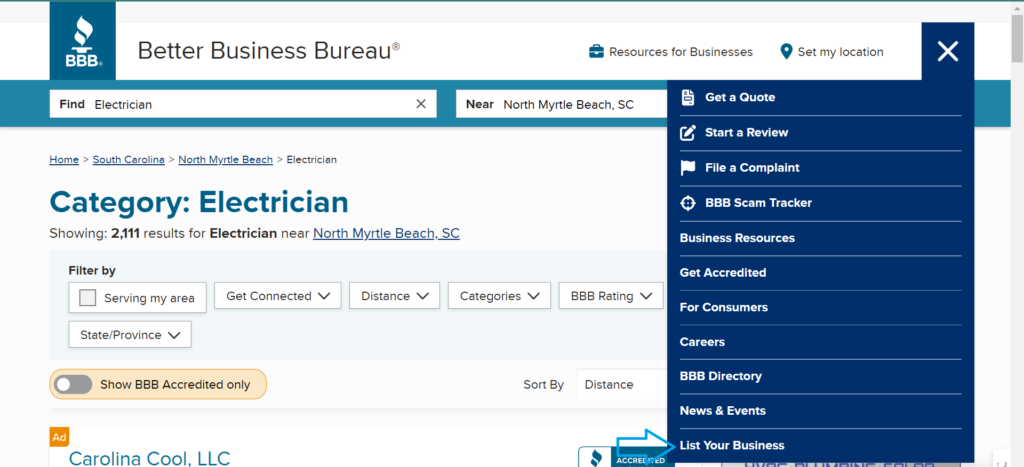
Pro tip:
Don’t be limited to free and local directories. List your site also on national and paid listings — but only if they are niche-relevant with high traffic & domain authority.
Additionally, list your business on Google’s directory: Google Business Profile. It is free and a crucial component of local SEO.
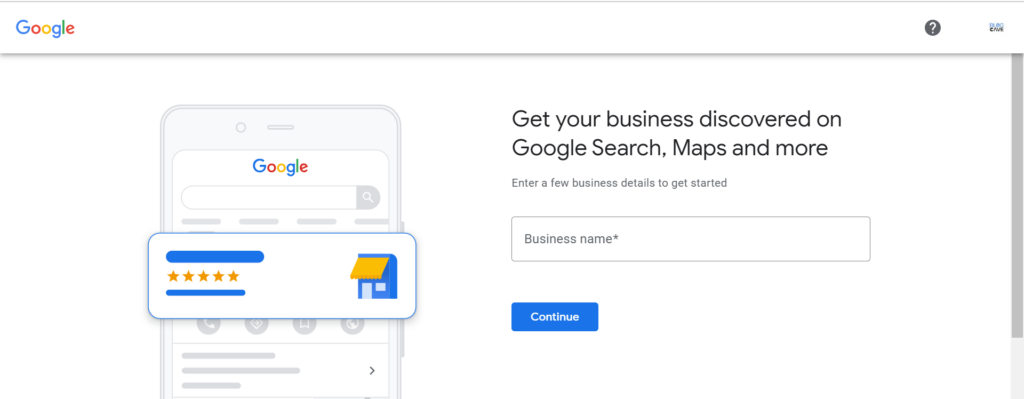
Join Communities and Online Forums
Forum links are similar to directory links. They are forms of pillow link building that often fetch nofollow links.
But unlike directory links, forum links have an additional layer of trust that can lead to sales. How?
Forums and communities have discussion channels where you can display your expertise. In the process, you will build relationships with other experts, build topical authority and following, and funnel leads to your business.
That is more important than a dofollow link that doesn’t lead to sales.
So, where can you find these communities and forums for your link building process?
- Start with Reddit and Quora
- If you use any SEO tool like Moz, Ahrefs, or Semrush, join their communities.
- Find and join niche-related groups on Facebook.

For the above group, as an example, you can contribute insightful posts and comments to movers related to electrician fixes.
Feature in Curated Lists in Your Niche
Curated lists (or “best of” lists) are roundup posts of businesses, products, and websites. They are similar to niche edit link building. How?
Curated lists are aged posts that are already ranking. Often, they are posted on high-quality websites like Angi, Yelp, and Yellow Pages. You only have to reach out to the authors of the posts or owners of the websites to feature your business — and generate links.
📌 How to find curated lists on relevant sites in your niche:
- Type “best X (your job title, business or product) in Y (your city)” into the Google search bar
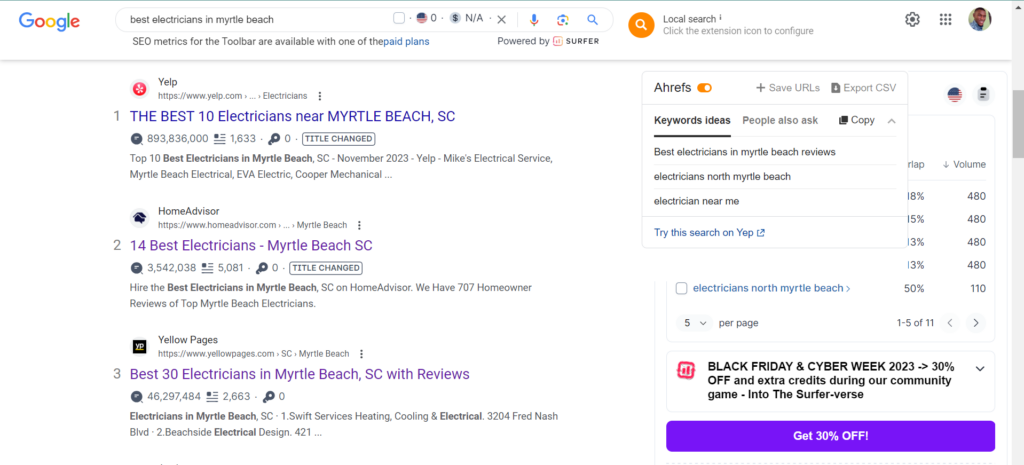
- You can manually add your business to the curated list for review sites like Yelp.
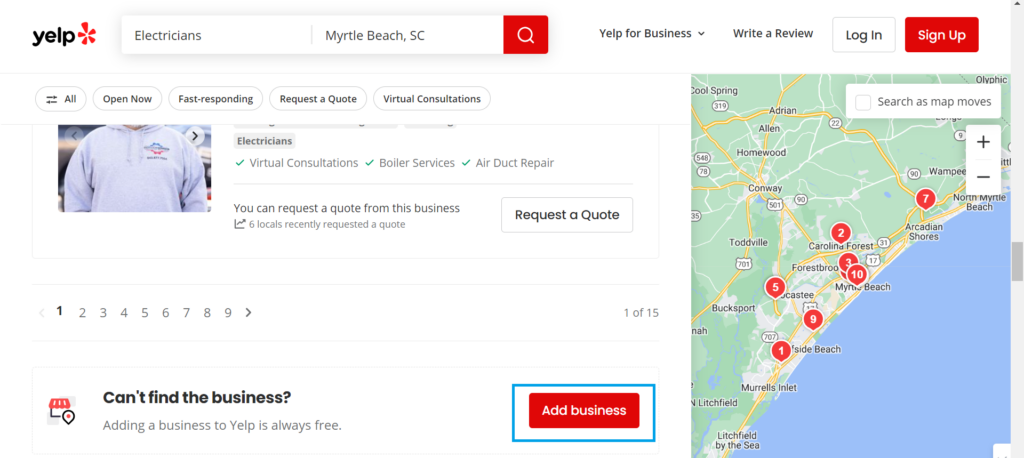
- For service providers like “This Old House,” contact the website owner/author for a feature.
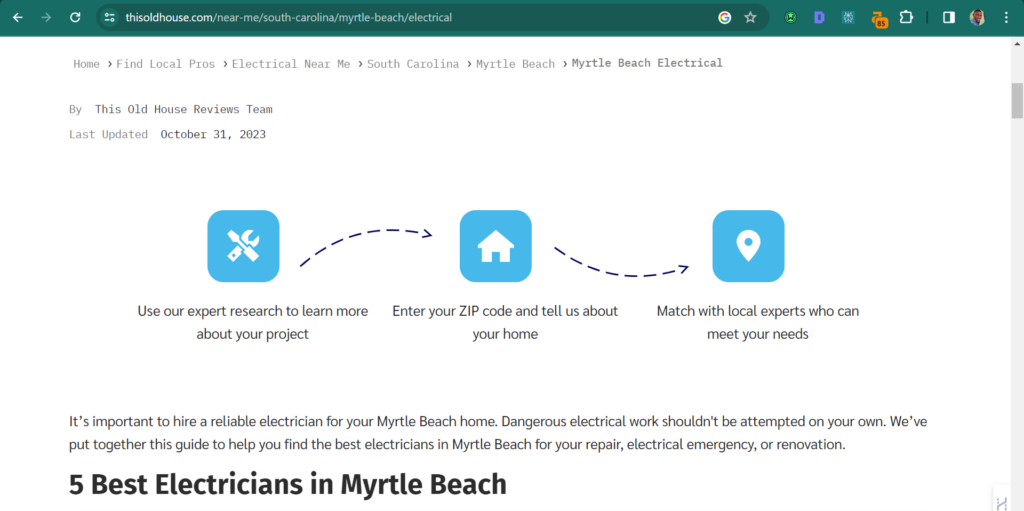
Action points:
- List your site on directories
- Join communities and online forums
- Feature in curated lists in your niche
Choose Your Link Building Strategies
Link building strategies lay the roadmap of your campaigns. They can make or mar your link building efforts. So, choose them carefully and systematically with these points.
Ascertain Your Link Building Strengths
Effective link building starts with you. Otherwise, you’ll run at a loss and only get spammy backlinks.
To avoid the latter, ask these questions:
- What are your unique strengths?
- What stage is your business?
- What more do you need to do to beat your competitors?
The answers to these fundamental questions will help you choose what link building strategy is the best for you.
📌 Let’s say you already have the answers. What link building tactics should you use?
I’ll run through 5 core strengths and their corresponding link building tactic.
- New business with several offline contacts and heavy media presence — PR link building
- Booming business with a lot of untapped exposure — target unlinked mentions
- New or old business with working relationships with other websites and industry leaders — guest posting/blogging, niche edit link building
- Top-draw articles and design skills — content marketing and infographic link building
- Decades worth of experience in a micro-niche — guest posting and HARO link building
Overall:
Whatever your strength is, learn sales and prospecting. You will need it for writing outreach emails.
Find the Pages With the Most Backlinks
If other websites already send links to your site, they love your content. Build on that momentum. But first, identify the liked web pages.
Ask these questions:
- What pages on my site receive the most backlinks?
- What type of content did such pages have? Are they long-form guides, landing pages, or linkable assets like niche-specific tools?
- Can you reproduce the said content on a scale?
Let’s answer the first question.
📌 What pages on your site have the most backlinks?
Note:
You can use GSC (Google Search Console) for the analyzes. But I’ll stick to third-party SEO tools for this article.
- Go to Ahrefs Site Explorer > enter your domain
- Check for “Best by links” under “Pages” on the left tab.
- Then, filter the result by backlinks; click “Links to page.”
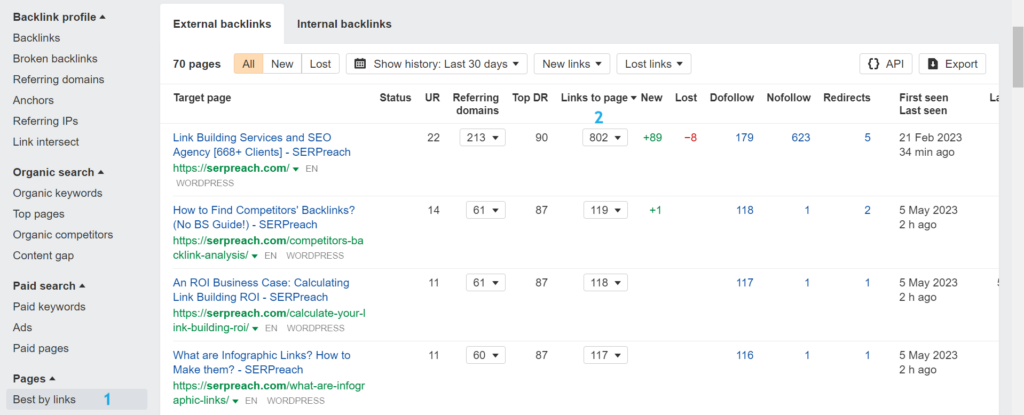
Pro tip: alternatively, you can use the “Top Content” method. The result will be the same.
Moving to the second question.
📌 What type of content did such pages have?
- Go to Semrush > type in your domain
- Scroll to “organic search positions.”

My take:
My yardstick is not limited to the number of rankings. I also consider the rankings on search results. In that case, my pages on “infographic links” and “niche edits” are my cornerstones to attract links.
The answer to the question (for my example): I (Informational) and T (Transactional) content.
Now to the last question.
📌 Can you reproduce your top-performing, high-quality content in scale?
Yes, you can create high quality content in scale.
If you check through my blog, I & T articles are the most of what you’ll find. They are the foundation of my link building campaigns.
Pro tip:
Once you find the top-performing content on your website, add internal links from them to your other articles. This will extend exposure, traffic, and link juice to all pages.
Check How Your Competitors Build Backlinks
The last cog in the wheel when choosing the perfect link building strategy is competitor analysis. It doesn’t matter if you are in a low-competition or high-competition niche; this seemingly minute technique is crucial to the entire results of your SEO efforts.
Besides, competitor analysis is not as minute as it seems. Otherwise, I won’t need a textbook-case guide to explain the topic.
Bottom line: taking a sneak peek at what competitors do to rank won’t hurt. In contrast, the analysis can benefit you significantly and make your campaigns more effective.
📌 How can you check competitors’ backlinks?
Check my blog post (linked above) for a detailed guide.
If you prefer to read this checklist and study competitor backlinks analysis full blow later, here’s a short example. I’ll use HubSpot.
- Go to Ahrefs Site Explorer > enter the domain
- Check the left tab > organic search > organic competitors
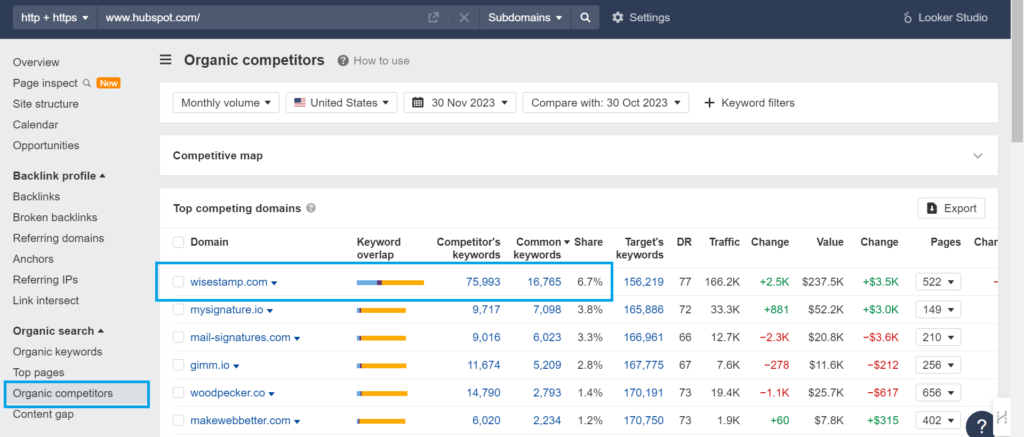
Ahrefs revealed 20 competing domains. But I’ll work with WiseStamp since it has the most keyword overlap with HubSpot.
Before checking, let’s ascertain the similarities between the two domains. Let’s visit the WiseStamp site.
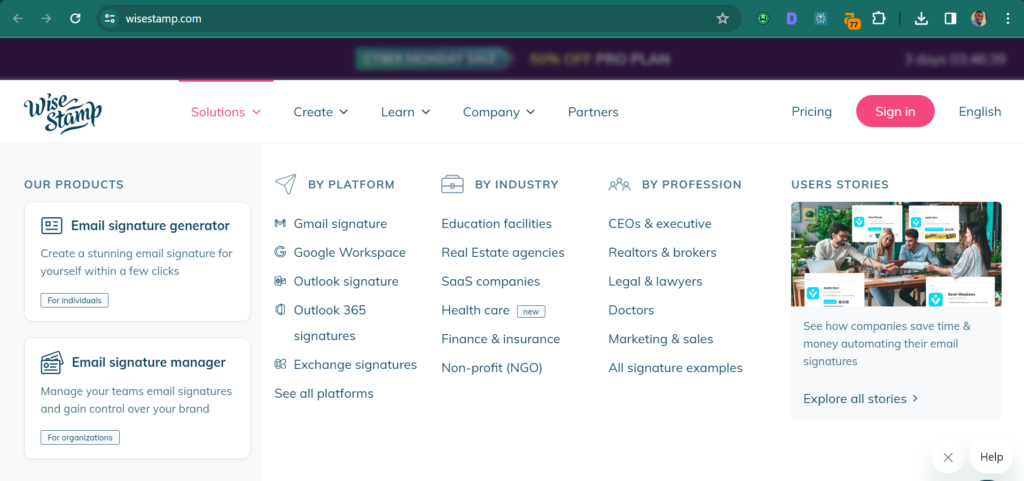
Obviously, WiseStamp is a competitor to HubSpot. They offer SaaS solutions to professionals and brands. Now, we can proceed to the backlink audit.
- Click the preferred competitor > best by backlinks
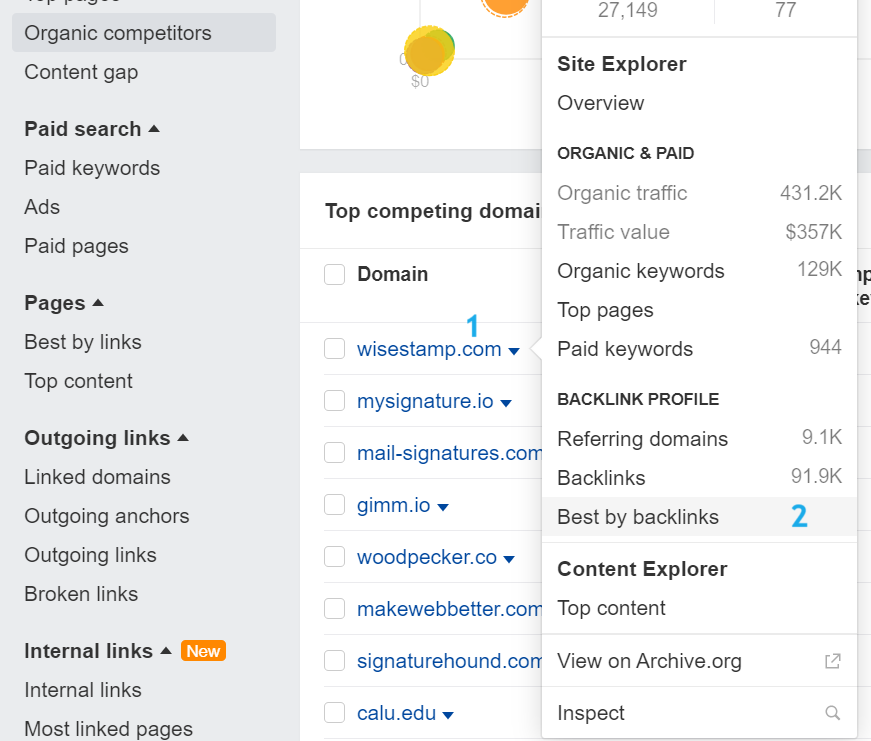
- Check the top 3 pages with the most backlinks — exclude the homepage.
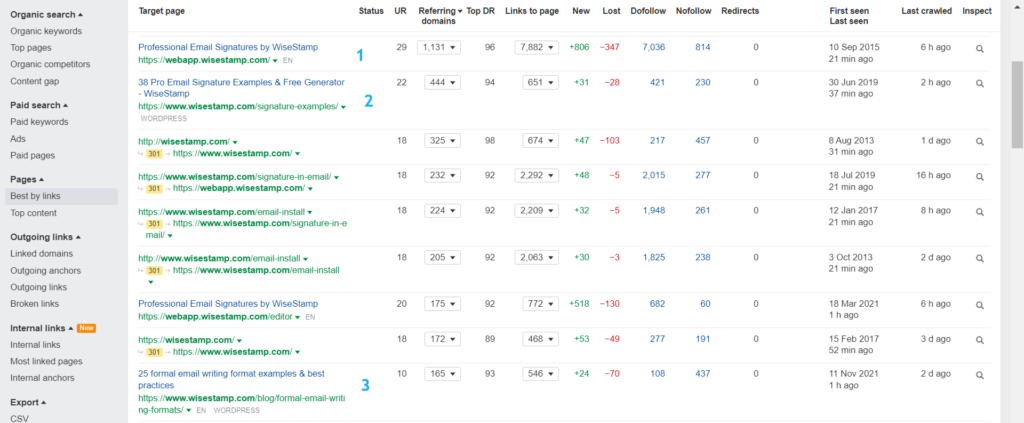
- The first is a free tool with a commercial-intent keyword — a linkable asset
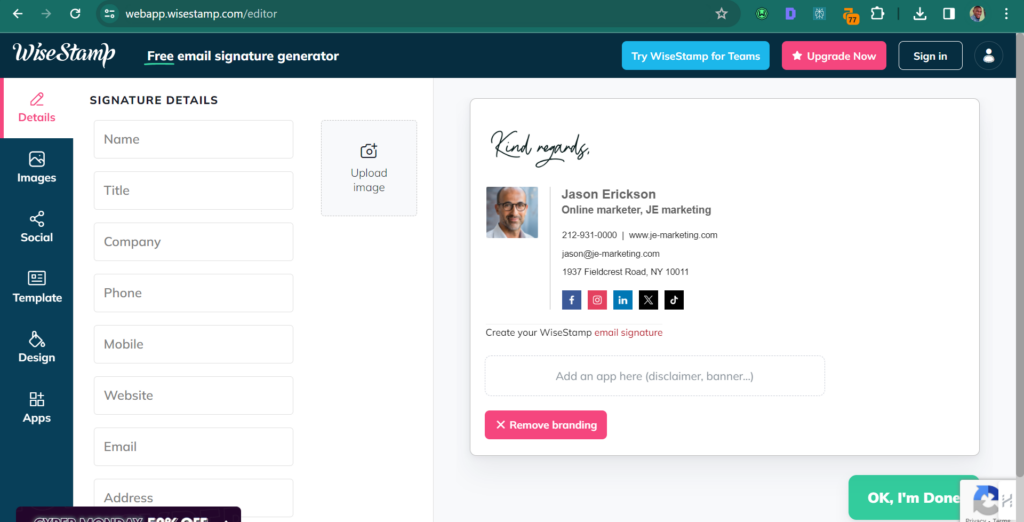
- 2 and 3 are long-form articles with information-intent keywords
Semrush revealed the intent better and the exact keywords to target.
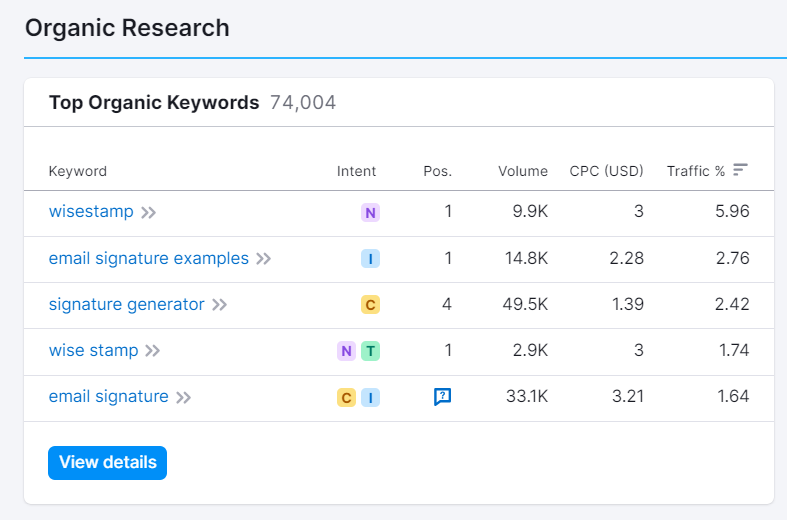
Baseline:
HubSpot needs more linkable assets (tools and informational articles) going by the results of our analysis. Also, they should do more outreach to target sites linking to competitors’ linkable assets.
That’s the point of competitor backlink analysis.
Find Unlinked Mentions
Regardless of your strategies, outreaches, and follow-ups, lapses like unlinked mentions will exist. It is so common in link building that chasing unlinked tags is a tactic. According to AIRA’s State Of Link Building, 2022, exploring unlinked mentions is a top tactic of link builders.
Bottom line: add finding unlinked mentions to your preferred link building strategies. I only do it last.
📌 How can you find unlinked mentions?
- The first place to check is your HARO links. Unlinked brand mentions are common in PR and HARO link building. So, start from there.
- Similarly to HARO, check the communities and social platforms where you regularly share your expert opinions.
- More importantly, use a tool like BrandMentions
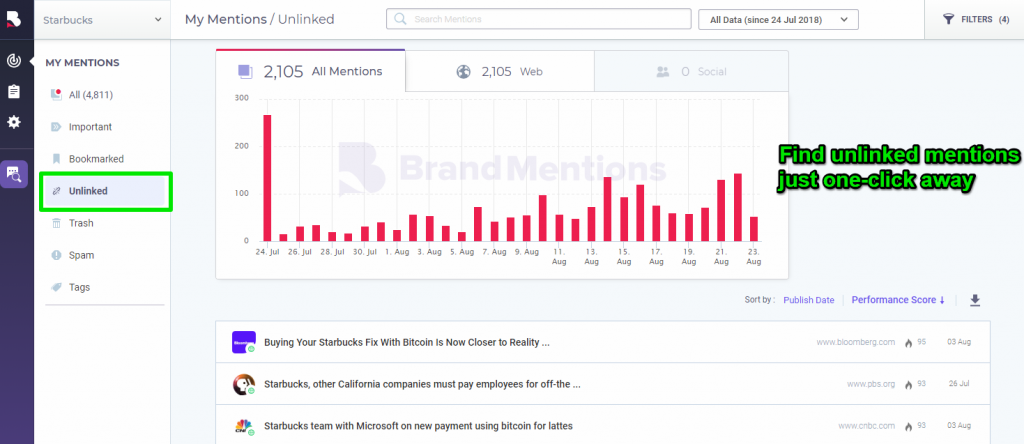
- Lastly, set up alerts with Google to get notifications as soon as your brand is mentioned.

Action points:
- Ascertain your link building strength
- Find the pages with the most backlinks
- Check how your competitors build backlinks
- Find unlinked mentions
Choose Your Target Sites
Your link building strategies will only build you the road map needed for SEO success. You still need a car to get you to your destination.
The car is the target site(s). The destination, on the other hand, is your desired rankings on search results.
The points below will help to pick the best cars.
Start at the Niche Level
If you focus solely on getting links from exact businesses like yours, your targets will be slim. They might not even send backlinks to you.
On the other hand, you have more chances of success with broader targets. However, they must be relevant to your niche. Otherwise, the links won’t matter.
📌 How can you find targets in your niche?
First, simplify your niche into 3 classifications.
- Micro niche
- Macro niche
- Adjacent niche
Here is an example:
Let’s use HubSpot — a B2B SaaS company.
- Micro niche — similar websites in the B2B SaaS space that focus on contact relationship management
- Macro niche — digital marketing websites
- Adjacent niche — sites that talk about productivity tools and automation
Use Your Keywords
The chances are that you’ll miss out on several link building opportunities when restricted to micro, macro, and adjacent niches. You probably only know so much.
That won’t be enough to build hundreds or thousands of high-quality links. Hence, the reason you must explore your keywords.
- What are your top-performing keywords?
- What websites are talking about your keywords?
- Can you get a feature on such websites?
Let’s get some answers. I’ll be using HubSpot as an example.
📌 Finding your top-performing keywords
- Go to Ahrefs Site Explorer > enter your domain
- Check the left tab > organic search > organic keywords
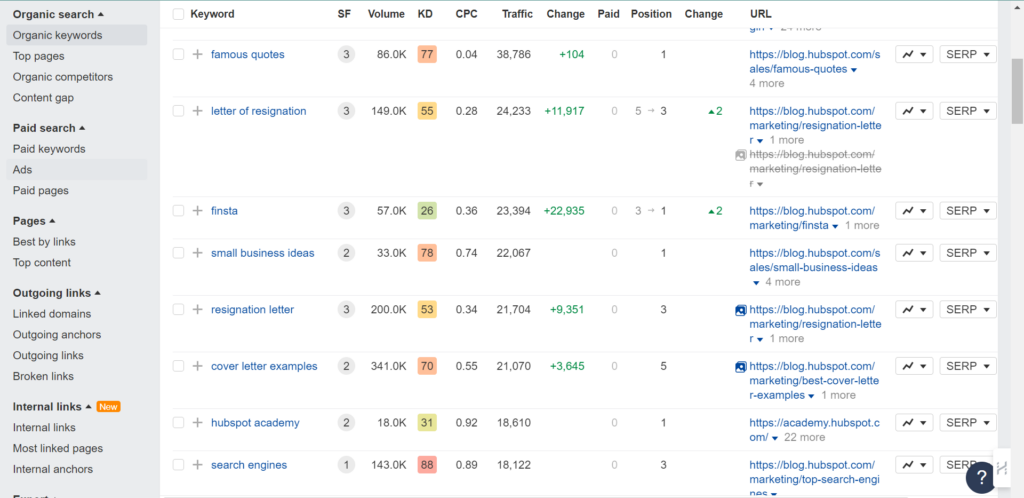
For this example, I’ll use “letter of resignation.”
📌 Finding websites publishing content around your keywords
- Go to Ahrefs Content Explorer > type in your keyword
- Apply the “only live” filter and select websites
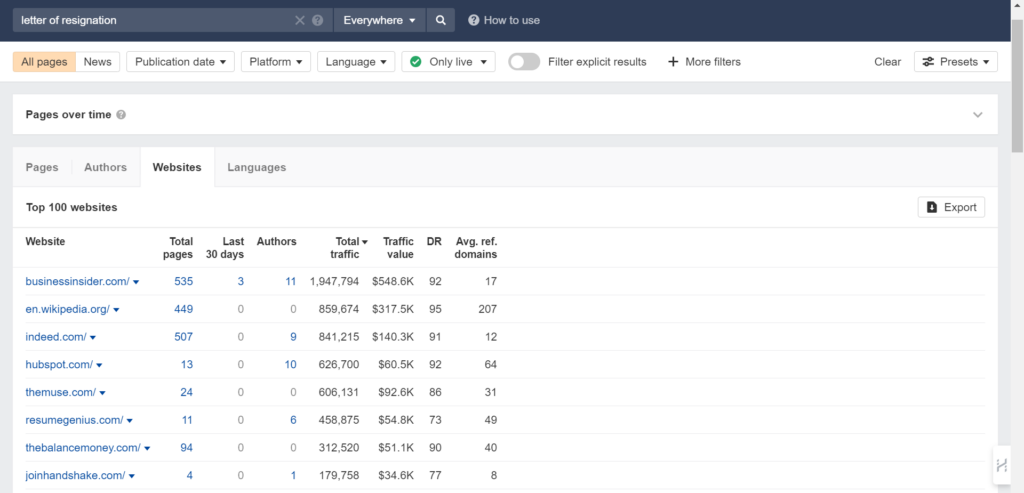
- Alternatively, go through the author route. If a writer writes about resignation letters once, they will likely write about a similar topic soon.
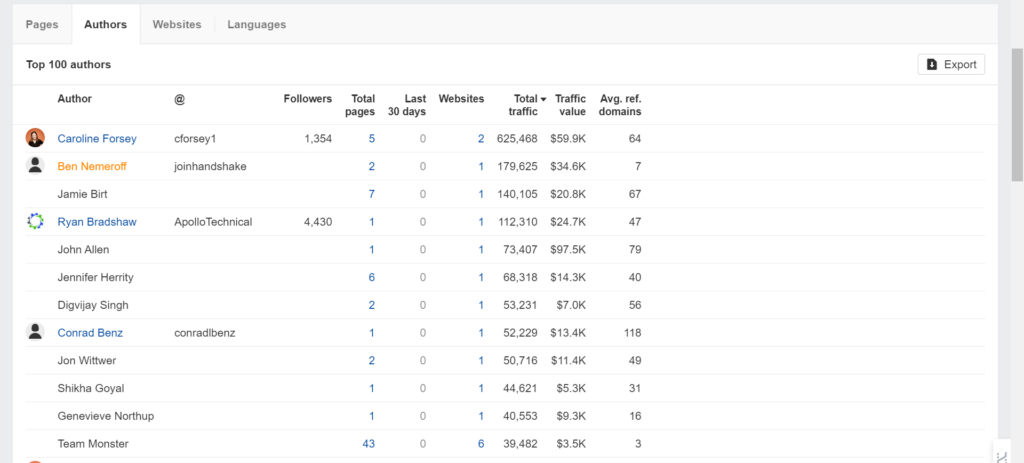
📌 Can you get a feature on such websites?
When there is no clear guest post guideline on any of the websites from Content Explorer, contact the author of any of the articles.
So, yes, you can feature on these websites.
Check Your Competitors’ Referring Domains
This is similar to what we did in competitor analysis. However, we are not focusing on the backlinks but on the linking pages (also called the Referring Domains, RD).
📌 How can you check competitors you get a feature on such websites?
While you can stick to Site Explorer for this analysis, it is time consuming and needs to check each of the RDs one after the other. You can bypass all that with the Link Intersect tool. That’s what I’ll use here.
- Go to Ahrefs Link Intersect tool > type in the domains as required, like this:
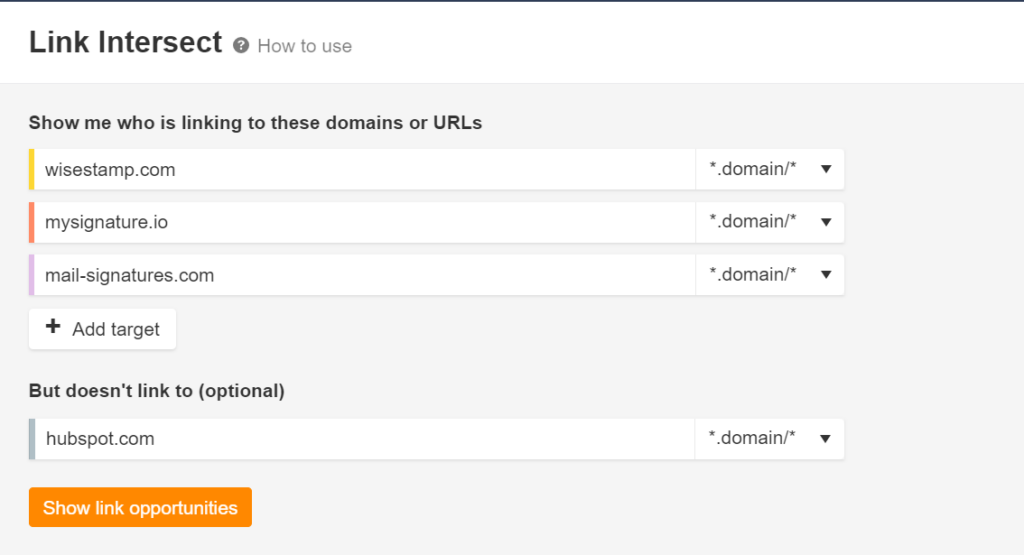
Add more targets as you see fit.
- Sort the results by Intersect. Click the tag, and you’ll see the domains like this:
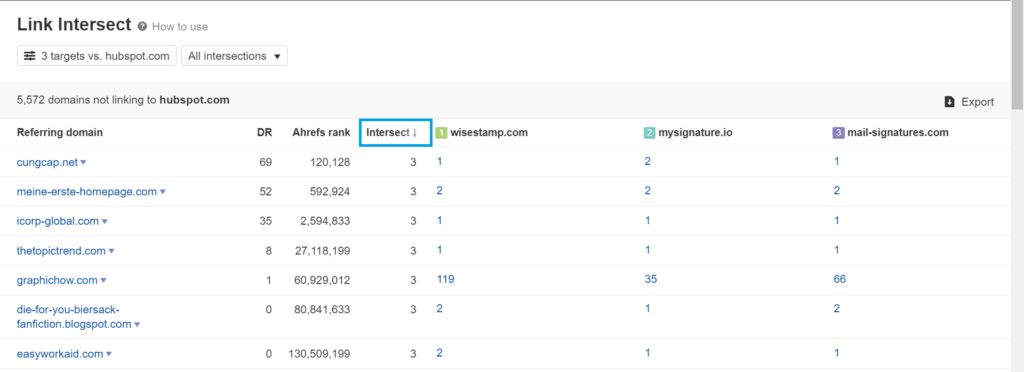
I prefer to add only the websites with all intersects (or at least ⅔). This way, there is a high chance of getting a link.
Action points:
- Start at the niche level
- Use your keywords
- Check your competitors’ referring domains
Now, we have the link building strategies and target pages. Should you start outreach right away?
Not; not yet. Vet the quality of the pages first.
Vet the Quality of the Target Websites
You can’t run with the results of third-party SEO tools. For starters, they all show different values for something so basic as the number of backlinks and referring domains. Also, there is more to a website than domain authority or ratings. The “more” is what manual checks will reveal.
Bottom line: visit each of the target pages and vet their quality. I’ll show you the exact things to check for.
Website Design
High-authority websites have professional websites. It is a no-brainer. Otherwise, their bounce rates will be high, and conversion will be low. With such, they will never rank high on search results pages.
Note:
Professional designs can also be simple too. In fact, less is more when it comes to website building.
While you should think of intricate designs when vetting a target website, focus more on these qualities:
- Neatness — fonts should be crisp, well-aligned, and compatible. Whether solid or pictured, backgrounds should be clean.
- Navigation — internal links and site architecture will be straightforward. There should be clear buttons for blogs, services rendered, and other vital parts of the website.
- Responsive design — websites should load fast and seamlessly regardless of the device — whether smartphones, tablets, or desktops.
Does the Website Look Like a Legit Business?
Not all websites are focused on business per se — sales of services or products. They might be news sites or just blogs. Even if that were the case, there are always some elements of realness.
Look out for those elements when vetting your target websites.
📌 What elements make a website legit?
- Social media links — check for links to popular social media networks like Facebook and Twitter. This shows the website is “real” and has an authentic following.
While checking the links, use it as an opportunity to gauge the sentiments of the users/customers/readers.
- Contact information — this should be at the footer of all the pages. Also, a legitimate business should have a dedicated “contact us” page.
- Authors — some websites won’t have authors’ names but “…team.” That is still okay. Anything otherwise might be a sign something is shady.
What Is the Quality of the Articles?
Weighing the quality of an article is not an easy feat, and there’s no formula to it. You have to read the article till the end to find out.
Also, weigh the said article against similar content on the topic. While at it, check that it is not spun content.
Either way, these questions can help:
- Does the outline of the article capture the essence of the title?
- Is there a hook, introduction, and conclusion/summary?
- If the article is a guide, are there pictured steps?
- When bold statements about figures are made, are they backed up by high-authority primary sources?
- Last, and most importantly, does the article answer the questions in the title and introduction?
If the content quality is still confusing despite all the questions, engage your writers/editors to check for you.
Is the Site a Link Farm?
The common telling signs of a link farm are the lack of a byline (author bio) and contact page. More evidently, there is usually no “about us” page.
Beyond all that, there is a more assured way to confirm whether a site is a link farm or authentic. Here it is:
Using the outbound links.
📌 Here is how to evaluate link farms using their outbound links:
I’ll use Technofizi for the first example because it is a less obvious link farm.
It even has “about us” and “contact us” pages, making it the perfect sample of how link farms can be convincing.
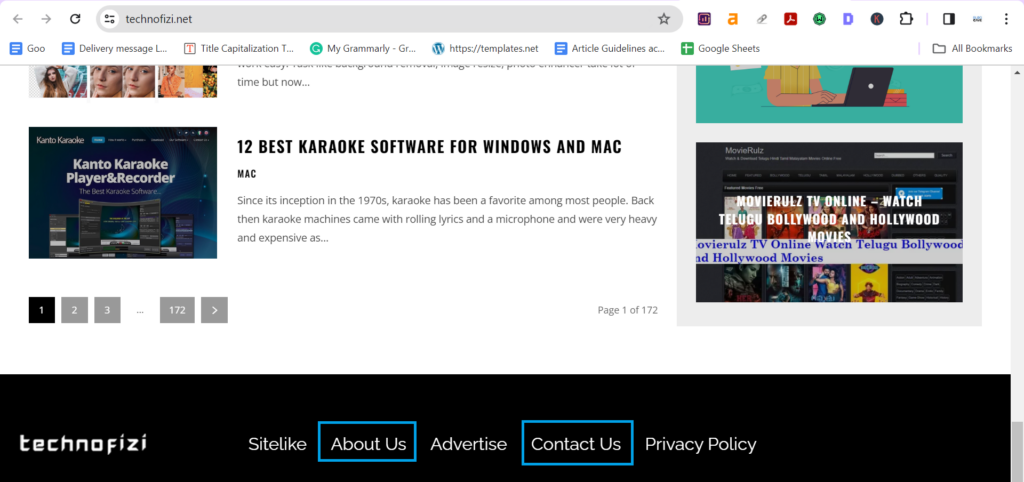
- Go to Ahrefs Site Explorer > enter the domain.
- A glance at the overview shows that the site looks authentic — even the traffic looks good
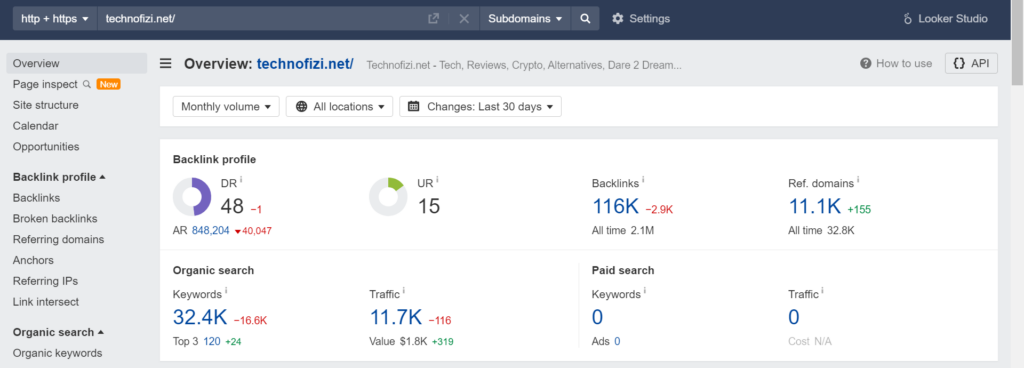
- Now, go to outgoing links > linked domains

- 1.3M outgoing links is outrageous compared to the site’s 116K inbound links.
SEO Metrics
I prefer to keep SEO metrics as the last checklist when vetting target websites. This way, my campaign is not affected by vanity or doctored metrics.
You should also follow suit.
Otherwise, you might be deceived by high domain ratings — link farms can have as high as 70 DR.
So, should you disregard domain authority or ratings?
- No. Instead, do the preliminary test and make it the last factor.
In addition to domain authority/rating, what other SEO Metrics should you check for?
📌 What are the top 3 SEO Metrics that count?
- Traffic — target websites with at least 500 visits per month. Anything lower might not work for aims.
- Organic rankings — ideally, you should target websites ahead of you in search results. But if you can’t meet the requirements for such, don’t go lower than websites on the second page of search results.
- DA/DR — focus on websites with higher domain authority/rating than yours. The higher the difference, the more the impact on your rankings.
Action points:
- Website design
- Does the website look like a legiit business?
- What is the quality of the articles?
- Is the site a link farm?
- SEO metrics
Craft an Irresistible Outreach Message
The last, and often the most critical, phase of a link building campaign is the outreach and negotiation. Without it, it won’t matter if your strategies are top-notch or spammy; you’ll likely end up with zero quality backlinks.
Luckily, you don’t have to go down that lane. The points below will teach you how to get outreach and negotiation right.
Address a Specific Person
It is wrong to address your outreach message to the content manager or head of the creative team. Your target website will interpret that as being lazy. If you can’t take time to research the name of the person, what are the chances your content is well-researched?
Don’t shoot yourself in the leg.
Do the right thing by addressing a specific person. But how?
- Do this for niche edits: contact the author of the post.
- For where there is a specific author, ask these questions:
- Is the site for an SME? If yes, contact the business/website owners.
- Is the site for top-end agencies or corporations? If yes, contact the content/marketing manager.
Pro tip:
To get the name of these leaders, search for the business on LinkedIn. Alternatively, ask around in content hubs like Superpath and Peak Freelance.
- Do this for guest posts: address the content manager, follow the guest blog guidelines, or contact the author of the guidelines.
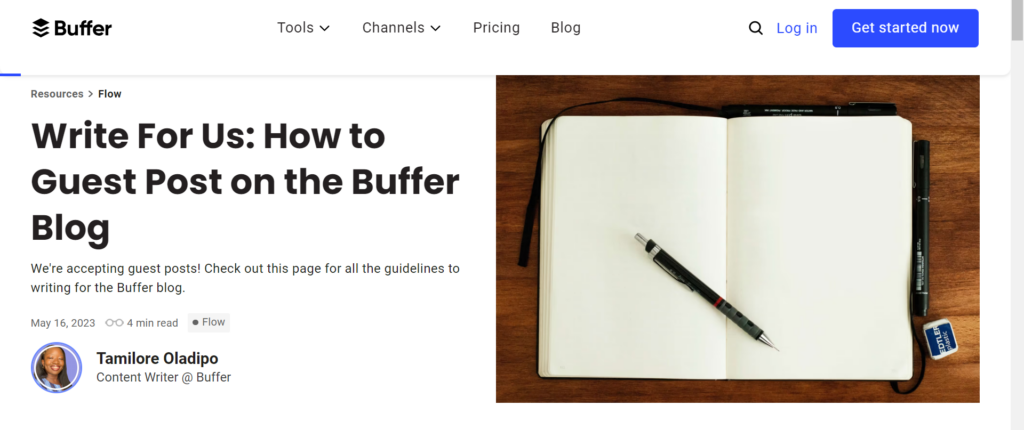
Alternatively, you can use tools like GetProspect or Hunter.io to find email addresses and names of your key figures of a business/website.
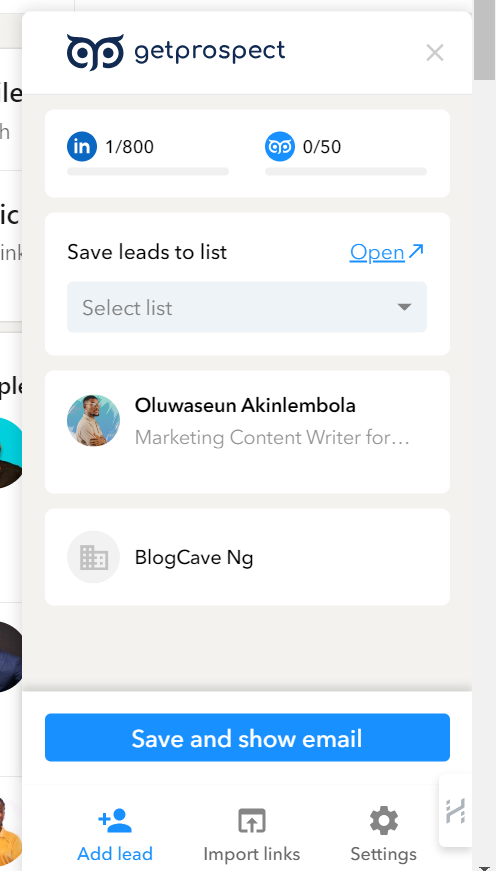
Start With an Introduction
By introduction, I don’t mean your name or your position. Those are the norms. And frankly, no one cares.
Instead of a redundant introduction, introduce your brand using the target website. Talk about how you share niches or SEO tactics ideas. Show more than you tell. How?
- For guest posting, for example, talk about how you’ve written for other high-authority websites. Even better, add the links.
- For “broken link building,” on the other hand, explain how you researched the steps you took to create the replacement page.
Bottom line:
Introduce yourself or your brand as a problem solver rather than just another SEO looking for backlinks. No one likes the latter.
Personalize Your Messages
When you have to send outreach to 100 websites, you might be tempted to run the task with a tool. Don’t. It’ll dilute your message and reduce the chances of success.
How so?
Every prospect has unique needs. Some will need their broken links replaced, while others might prefer expert quotes or niche tools.
Evidently, sending the same message to these different profiles won’t yield results.
In fact, I’ll advise you to have a dedicated team for your outreach.
Split the team across different strategies and have each unit send outreach to their areas of expertise.
Lastly, your samples must correlate with the areas of expertise of your target. Otherwise, the content managers will notice you sent a mass message and mark your email as spam.
Your Message Is Incomplete Without an Offer
Don’t get carried away discussing how you can help and the benefits. Introduce your offer/pitch/ask.
Your offer should show beyond doubt that the target websites will gain as you will with the relationship. And it doesn’t have to be complex.
Your offer can be as simple as a prewritten replacement page for a broken link or topic ideas to close the content gaps of the target website.
Further reading: The Tools & Templates for Outreach Link Building
Wear Your Negotiation Hat
After stating the offer, convince the recipient of the links you’d love to get. Unfortunately, there are some restrictions.
Some websites will restrict how many links you can include in a backlink and where to place them. Some will only hyperlink your social media links — under the byline.
Despite the restrictions, you can still negotiate for a few things:
- The anchor text — decide the placeholder for your links to avoid generic anchors.
- The linking page — decide the page (on your site) where the link will be directed to.
- Ask for an author bio instead of “guest post contributions” — this will help you get dofollow links and improve your perceived expertise. Plus, you can insert a link to your website naturally here.
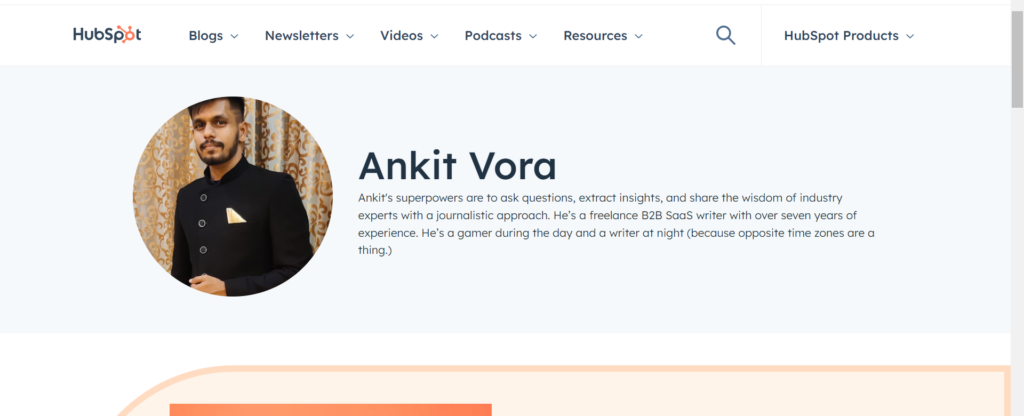
Action points:
- Address a specific person
- Start with an introduction
- Personalize your messages
- Your message is incomplete without an offer
- Wear your negotiation hat
Summary
While there are intricacies involved in link building, the main parts can be compressed into 20 actionable steps — as discussed in this guide.
Here is the list again — the ultimate link building checklist for beginners:
- List your site on directories
- Join communities and online forums
- Feature in curated lists in your niche
- Ascertain your link building strength
- Find the pages with the most backlinks
- Check how your competitors build backlinks
- Find unlinked mentions
- Start at the niche level
- Use your keywords
- Check your competitors’ referring domains
- Website design
- Does the website look like a legit business?
- What is the quality of the articles?
- Is the site a link farm?
- SEO metrics
- Address a specific person
- Start with an introduction
- Personalize your messages
- Your message is incomplete without an offer
- Wear your negotiation hat
Confused about any of the points?
Reach out in the comments, and I’ll guide you.
Cheers to building high-authority links naturally!
